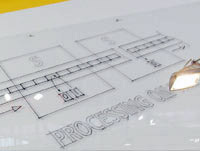
ETG | Latest News

EtherCAT: Staying ahead with Industrie 4.0 and IoT developments
04/2017 | There is nothing new about the suitability of EtherCAT when enabling the concepts of Industrie 4.0. The technology has, by design, all the tools necessary to support the digital transformation. As the world’s largest fieldbus user organisation, the ETG strives to be actively involved in the developments surrounding Industrie 4.0 and IoT.The success of EtherCAT has always been based on the outstanding characteristics of the technology, including exceptional performance, high flexibility and open interfaces. As a result, EtherCAT is inherently well-suited to meet and exceed the requirements of the digital transformation. Thus, the leading performance of the technology achieves an important prerequisite for adding big data applications to control networks. In addition, the high flexibility of EtherCAT makes it possible to establish cloud connectivity in existing systems without having to alter the control system or manually update the slave devices. The open interfaces permit the easy integration of any IT-based protocol within the master or directly into the slave devices. Ultimately, this enables direct connection from the sensor to the cloud without protocol discontinuities.
The fact that all of these properties were already part of the technology from the outset highlights the long-term sustainability of the EtherCAT architecture. Should further features become relevant in the course of development, these can be easily integrated without changing the basic protocol: EtherCAT has been and remains stable as version 1 since its introduction in 2003.
The ETG has also contributed to the development of TSN (Time Sensitive Networking) from the very beginning. Years ago, when TSN was still known as AVB, EtherCAT experts were already actively involved in the TSN working group within IEEE 802.1. This was logical considering that EtherCAT, due to its unique functional principle, provides leaner and faster access from controls – including those based in the cloud – to networks on EtherCAT slaves when compared with any other fieldbus or industrial Ethernet technology.

ETG Member Area News
Please click here for member specific and internal ETG news
News Archive
News Archive 2016
News Archive 2015
News Archive 2014
News Archive 2006-2013
